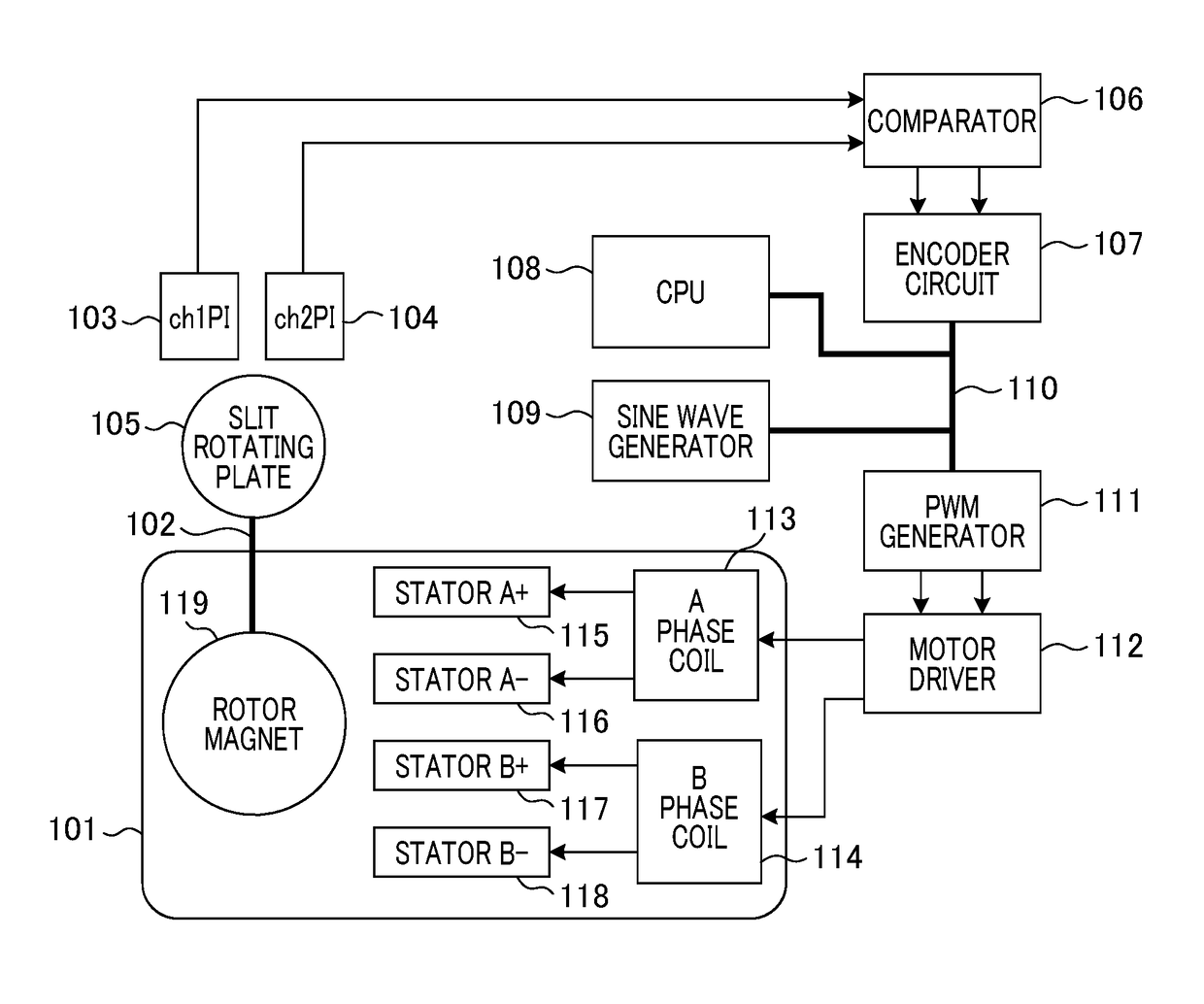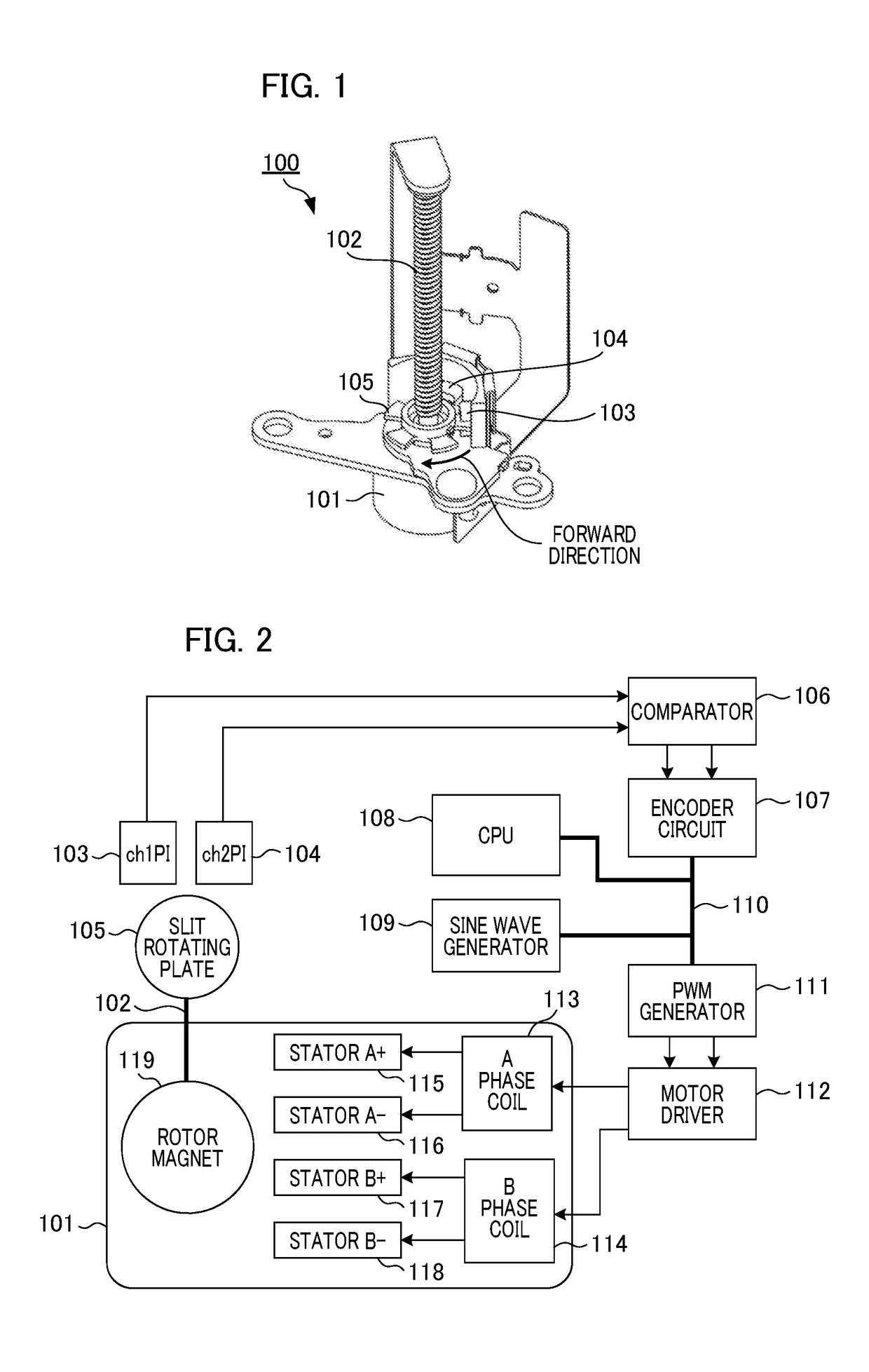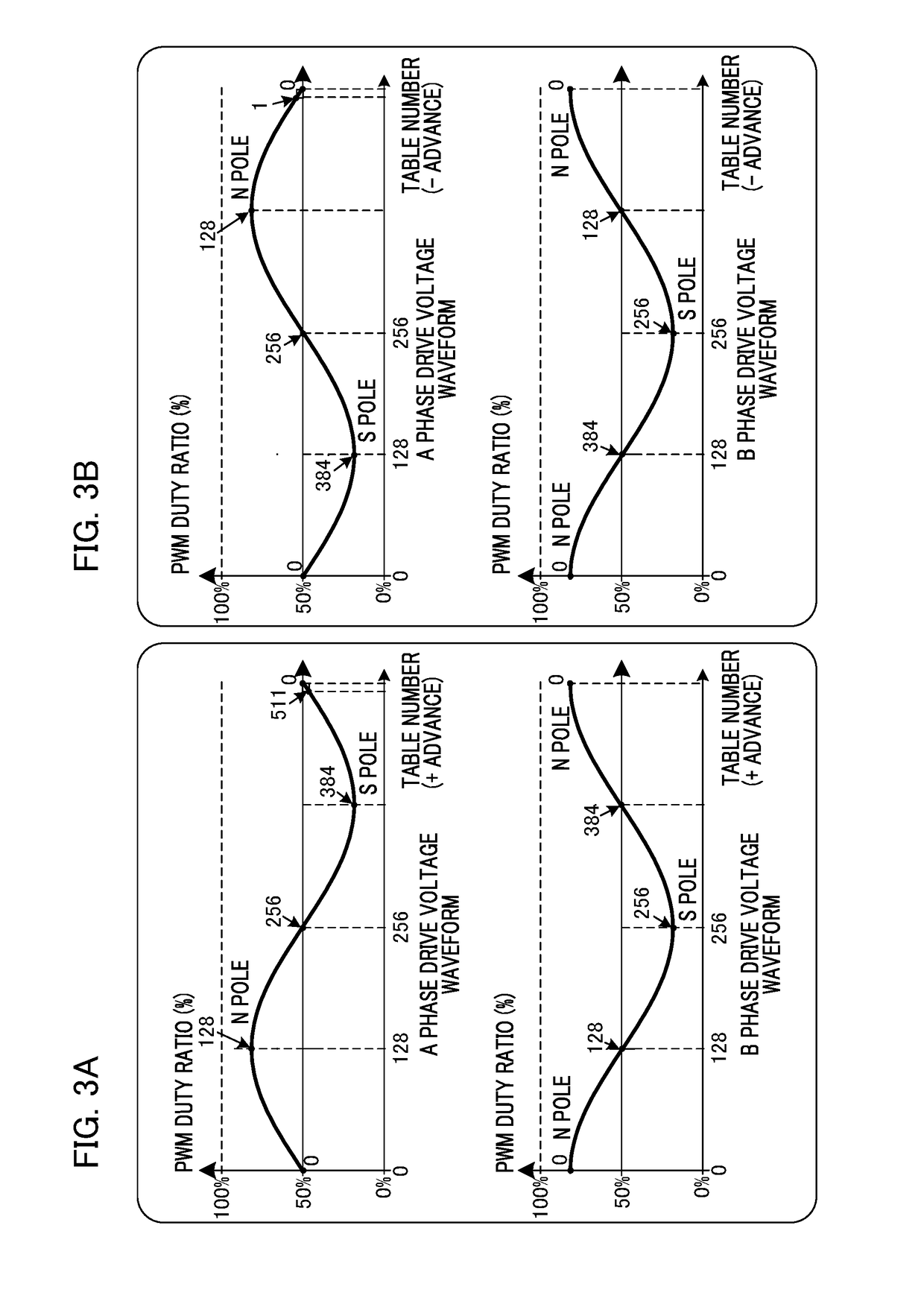Electric motor control device, electric motor system and electric motor control method
a technology of electric motors and control devices, applied in the direction of dynamo-electric converter control, dc motor speed/torque control, angular speed control of ac motors, etc., can solve the problem of inability to achieve control for the purpose of targeting characteristics in control design
- Summary
- Abstract
- Description
- Claims
- Application Information
AI Technical Summary
Benefits of technology
Problems solved by technology
Method used
Image
Examples
example 1
[0050]A flow of a process in Example 1 of the present invention will be described with reference to flowcharts in FIGS. 7 and 8. A speed feedback (which is also referred to as an FB) process shown in FIG. 7 is assumed to be performed by the CPU 108 in a periodic process having a necessary and sufficient frequency.
[0051]After the speed FB process is started, in S701, the CPU 108 calculates a periodic count difference value. A latest cycle time corresponding to latest speed information which is currently detected is expressed as a variable CUR_SNS_TIME_CNT. A target cycle time of an ENC signal corresponding to a target speed is expressed as a variable TRGT_SNS_TIME_CNT. When a periodic count difference value is expressed as a variable ERR_SNS_TIME_CNT, the periodic count difference value is calculated using the following expression.
ERR_SNS_TIME_CNT=CUR_SNS_TIME_CNT−TRGT_SNS_TIME_CNT
[0052]The periodic count difference value is stored in a storage area of the variable ERR_SNS_TIME_CNT. ...
example 2
[0091]Next, Example 2 of the present invention will be described with reference to FIGS. 12A to 18. In Example 1, with regard to a voltage waveform, a process of correcting non-linearity between an amplitude setting value and an output value (an integrated value) is illustrated. In this example, a process of correcting non-linearity of output torque using an amplitude setting value and a relationship between a rotational phase of the rotor magnet 119 and a phase of a drive waveform is illustrated. For this reason, first, a principle explanation of changed content of the output torque due to a phase difference between the rotational phase of the rotor magnet 119 and the phase of the drive waveform will be provided using FIGS. 12A to 17A and 17B.
[0092]FIGS. 12A to 12E are diagrams for describing a mechanism of rotational torque generated due to excitation of the stators A+115. FIGS. 12A to 12D illustrate cases in which rotational phases of a rotor are 0°, 90°, 180°, and 270°. FIGS. 12...
modified example
[0108]In Examples 1 and 2, the description thereof has been given using a configuration in which a drive waveform of a pseudo-trapezoidal wave maybe used at all times when a speed is controlled. In a modified example, speed characteristics of an electric motor are individually acquired in advance and ON / OFF of speed control using a pseudo-trapezoidal wave is switched in accordance with a target rotation speed. Since careless use of a pseudo-trapezoidal wave is likely to affect vibrations and noise, as long as the motor can sufficiently reach a target rotation speed with a sine waveform-like drive waveform, the target rotation speed may be set in advance such that the process does not proceed to the process of S711 to S717 in FIG. 8.
[0109]In the modified example, the CPU 108 stores individual difference information of speed characteristics of the motor in a storage unit. It is assumed that the individual difference information is information representing a characteristic difference o...
PUM
 Login to View More
Login to View More Abstract
Description
Claims
Application Information
 Login to View More
Login to View More - R&D
- Intellectual Property
- Life Sciences
- Materials
- Tech Scout
- Unparalleled Data Quality
- Higher Quality Content
- 60% Fewer Hallucinations
Browse by: Latest US Patents, China's latest patents, Technical Efficacy Thesaurus, Application Domain, Technology Topic, Popular Technical Reports.
© 2025 PatSnap. All rights reserved.Legal|Privacy policy|Modern Slavery Act Transparency Statement|Sitemap|About US| Contact US: help@patsnap.com



